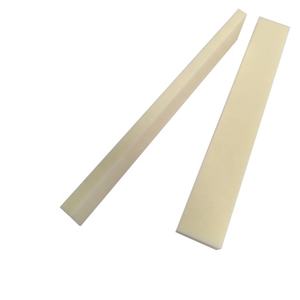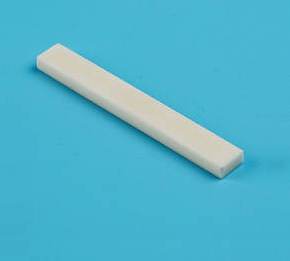Professional industry ceramic supplier, silicon nitride, silicon carbide, aluminum nitride and any other kinds of ceramics.
PRODUCT PARAMETERS
Description
Overview of Laser Scribing 96% 99.6% Aluminum Oxide Substrate Al2O3 Alumina Ceramic Plate
Laser Scribing 96% 99.6% Aluminum Oxide Substrate Al2O3 Alumina Ceramic Plate are one of the most widely used and versatile technical ceramics, prized for their excellent combination of properties. Composed primarily of aluminum oxide (Al₂O₃), they offer outstanding hardness, wear resistance, and electrical insulation, even at high temperatures. From low-purity grades for general industrial use to high-purity compositions for demanding applications, alumina ceramics provide a cost-effective and reliable solution across a vast range of industries.
Features of Laser Scribing 96% 99.6% Aluminum Oxide Substrate Al2O3 Alumina Ceramic Plate
-
High Hardness & Wear Resistance: Excellent resistance to abrasive wear, making it ideal for liners, nozzles, and guides.
-
Superior Electrical Insulation: Maintains high electrical resistivity and dielectric strength, even at elevated temperatures.
-
Excellent Thermal Stability: Withstands high operating temperatures and exhibits good thermal conductivity.
-
High Mechanical Strength: Possesses good compressive strength and stiffness.
-
Chemical Inertness: Resists corrosion from a wide range of acids, alkalis, and other harsh chemicals.
-
Cost-Effectiveness: A highly versatile and economically efficient ceramic material for numerous applications.
Specification of Laser Scribing 96% 99.6% Aluminum Oxide Substrate Al2O3 Alumina Ceramic Plate
This alumina ceramic plate uses aluminum oxide, specifically Al2O3. The purity level ranges from 96% to 99.6%. This material is known for its toughness. It is very hard. It resists wear extremely well. Alumina ceramic also handles high temperatures easily. It offers excellent electrical insulation. These properties make it suitable for demanding uses.
The plate undergoes laser scribing. This process is precise. Lasers create fine lines or patterns on the surface. It is much more accurate than traditional mechanical cutting methods. Laser scribing produces clean edges. It minimizes chipping or cracking. This is crucial for fragile ceramic materials. The process allows for complex designs. It is controlled by computer software. This ensures high repeatability. You get consistent results every time.
The high purity (96% to 99.6%) impacts performance. Higher purity generally means better hardness. It often means improved resistance to chemicals. It can lead to better electrical insulation. It might enhance thermal stability. The exact properties depend on the specific purity grade chosen. Both levels offer significant advantages over other materials.
Key features include exceptional hardness. It is comparable to sapphire. It withstands abrasion effectively. It provides very good thermal shock resistance. This means it can handle sudden temperature changes. It maintains its shape and strength. The material is chemically inert. It does not react with many acids or alkalis. It is an excellent electrical insulator. These features are inherent to alumina ceramic.
Common applications are in electronics. It is used for substrates in circuits. It serves as bases for semiconductor processing. It acts as insulators in high-power devices. Industrial uses include wear-resistant parts. It is found in pump seals and valve components. It is used in high-temperature furnace fixtures. It appears in laboratory equipment. Laser scribing allows precise segmentation. It enables custom circuit patterns. It facilitates easy break lines for separation. This plate is a reliable, high-performance material.
Applications of Laser Scribing 96% 99.6% Aluminum Oxide Substrate Al2O3 Alumina Ceramic Plate
Aluminum oxide ceramic plates are very useful. They are made from Al2O3, also called alumina. These plates are very strong. They resist heat extremely well. They also block electricity. You find them in many technical areas. Laser scribing works great on them. Scribing means cutting or marking with a laser beam. It is very accurate and clean. This method is perfect for shaping alumina.
These ceramics often have high purity. Common levels are 96% and 99.6% pure. This purity matters a lot. It gives the material its special properties. Laser scribing handles this hardness easily. It makes fine cuts without breaking the ceramic. This is important for delicate parts.
One major use is in electronics. Alumina plates form circuit boards. Laser scribing cuts precise circuit paths. It marks identification codes too. The ceramic insulates electricity well. It also carries heat away. Lasers ensure clean edges. This prevents electrical shorts.
Another big area is sensors. Many sensors use alumina substrates. Laser scribing creates tiny features on them. These features are essential for the sensor to work. The process is very reliable. It produces the same result every time.
Medical devices also rely on these ceramics. Alumina is safe for the body. Laser scribing shapes parts for implants or tools. It allows for complex designs. The ceramic withstands sterilization easily.
Industrial tools use alumina plates as well. They are parts for wear resistance. Laser scribing might mark them for tracking. It could create special surface textures. The ceramic lasts a long time under tough conditions.
Laser scribing offers control. It works fast. It leaves a smooth finish on alumina. This reduces the need for extra polishing. It is a key process for making advanced ceramic components.
Company Profile
Tanki New Materials Co.Ltd. focus on the research and development, production and sales of ceramic products, serving the electronics, ceramics, chemical and other industries. Since its establishment in 2015, the company has been committed to providing customers with the best products and services, and has become a leader in the industry through continuous technological innovation and strict quality management.
Our products includes but not limited to Aerogel, Aluminum Nitride, Aluminum Oxide, Boron Carbide, Boron Nitride, Ceramic Crucible, Ceramic Fiber, Quartz Product, Refractory Material, Silicon Carbide, Silicon Nitride, ect. please feel free to contact us.

Payment Methods
T/T, Western Union, Paypal, Credit Card etc.
Shipment Methods
By air, by sea, by express, as customers request.
5 FAQs of Laser Scribing 96% 99.6% Aluminum Oxide Substrate Al2O3 Alumina Ceramic Plate
Laser scribing cuts precise lines on 96% to 99.6% aluminum oxide (Al2O3) ceramic plates. This process is vital for electronics manufacturing. Alumina ceramic is hard. Conventional cutting tools often crack or chip it. Laser scribing avoids this problem.
Why use laser scribing on alumina plates? Alumina ceramic is brittle. Mechanical cutting creates stress. This stress leads to breakage. Laser scribing uses focused light energy. The laser beam vaporizes material. This vaporization creates clean, controlled cuts. It minimizes stress on the surrounding ceramic. This reduces cracking significantly.
How does laser scribing work on alumina? A high-power laser beam targets the ceramic surface. The intense heat creates a small melt zone. The laser rapidly removes material along a defined path. This action forms a narrow groove. This groove weakens the plate along the desired break line. Operators then snap the plate cleanly along this scribed line. The result is a precise edge.
What are the benefits over other methods? Laser scribing offers superior precision. It creates very narrow grooves. This saves material. It allows for complex shapes and tight tolerances. There is no physical contact. This eliminates tool wear. It also prevents contamination from cutting debris. The non-contact method ensures cleaner parts. Setup times are often faster too. This improves production efficiency.
How precise is laser scribing? Laser systems achieve high accuracy. They can produce line widths down to micrometers. Positioning accuracy is excellent. This precision enables fine features. It supports dense circuit patterns on substrates. It allows manufacturers to create intricate designs reliably.
Where is laser scribed alumina used? These ceramic plates are common in electronics. They serve as substrates for circuits. They are bases for LED chips. They are used in power modules. The clean break edges from laser scribing ensure reliable electrical performance. The precise dimensions guarantee components fit correctly. Laser scribing is essential for high-quality alumina ceramic parts in demanding applications.
REQUEST A QUOTE
RELATED PRODUCTS

Factory High Hardness Alumina Ceramic Parts Aluminum Oxide Chemical Stability Ceramic Shaft

Bare Aluminum Oxide Substrate 96% Al2O3 Alumina Ceramic PCB Sheet

Aluminum Oxide Alumina Ceramic Insulating Beads for Thermocouple

Ultra-Smooth Low Friction Precision Ground Aluminum Oxide Ceramic Plate Al2O3 Alumina Substrate

Aluminum Oxide Ceramic Basket Gemstone with Zirconia Ceramic Gravel 38.1*25*23mm


